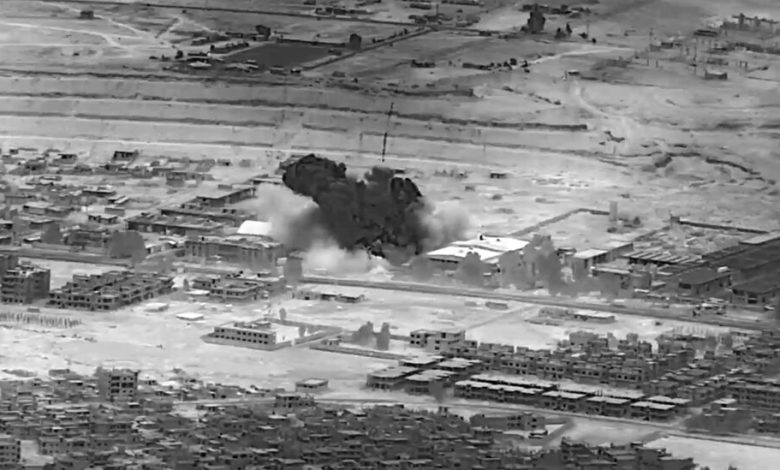U.S. Carries Out Another Round of Airstrikes on Iran-Linked Targets

The United States conducted airstrikes against two facilities used by Iran’s Islamic Revolutionary Guards Corps and its proxies in eastern Syria late Sunday, Pentagon officials said, in the latest retaliation for what has become a daily barrage of rocket and drone attacks against American forces in Iraq and Syria.
Air Force F-15E fighter jets struck several buildings in Abu Kamal used for training and storing munitions, and a safe house in Mayadin used as a command headquarters.
The strikes came just four days after American warplanes hit a munitions warehouse in eastern Syria. Pentagon officials say the two latest sets of strikes, as well as one on Oct. 27, were meant to deter Iran and the militias it supports in Syria and Iraq, which the Biden administration has blamed for the attacks.
President Biden has rejected more aggressive bombing options proposed by the Pentagon out of fear of provoking a wider conflict with Iran. But the White House’s responses thus far have been so narrow that Republican critics in Congress and some air power advocates say they only invite more frequent and more dangerous attacks against U.S. troops in the region.
Pentagon and other Biden administration officials rejected that criticism on Sunday, saying that the American airstrikes have been in self-defense, and in proportion to the attacks by Iran-backed militias.
“The president has no higher priority than the safety of U.S. personnel, and he directed today’s action to make clear that the United States will defend itself, its personnel and its interests,” Defense Secretary Lloyd J. Austin III said in a statement while traveling in Asia.
Unlike the two previous sets of strikes, the Pentagon did not make senior officials available after Sunday’s military response to discuss details. Pentagon officials said they were still analyzing the strikes and did not know if anyone on the ground was hurt or killed.
The Pentagon said on Saturday that there had been at least 48 attacks against U.S. forces in Syria and Iraq since Oct. 17 and that at least 56 U.S. service members had been injured. Roughly half of those suffered traumatic brain injuries, and two had to be flown to Landstuhl military hospital in Germany for treatment.
The United States has 2,500 troops in Iraq and 900 in Syria, mostly to help local forces fight remnants of the Islamic State.
The United States has been shifting military assets to the Middle East since Hamas’s surprise attack against Israel on Oct. 7 to try to prevent a regional war that could drag American forces into conflict with Iranian proxies in Lebanon, Yemen, Iraq and Syria.
It has deployed one aircraft carrier to the eastern Mediterranean near Israel, and another recently left the Red Sea and is sailing toward the Arabian Sea. The Pentagon has also sent dozens of additional warplanes to the Persian Gulf region, as well as additional Patriot antimissile batteries and other air defenses to several Gulf nations to protect U.S. troops and bases in the region.
These air defenses so far have mostly been successful in knocking down incoming threats to American military personnel, but U.S. military officials say that troops have been lucky that none have been killed as the attacks have increased.
“It is quite clear that Iran and its proxy groups are escalating against U.S. forces in Iraq and Syria, and we have a range of options at our disposal to defend ourselves,” Dana Stroul, the Pentagon’s top Middle East policy official, told a House committee last week.



